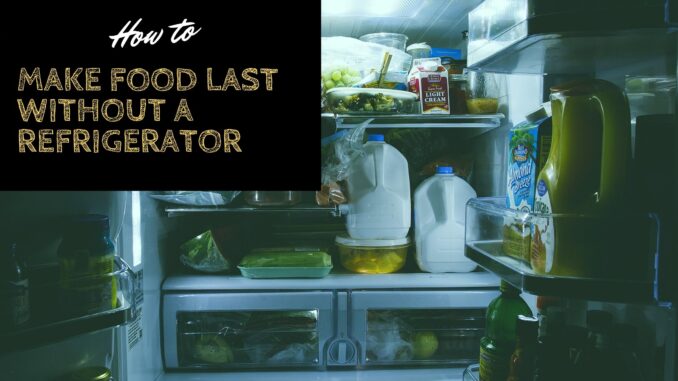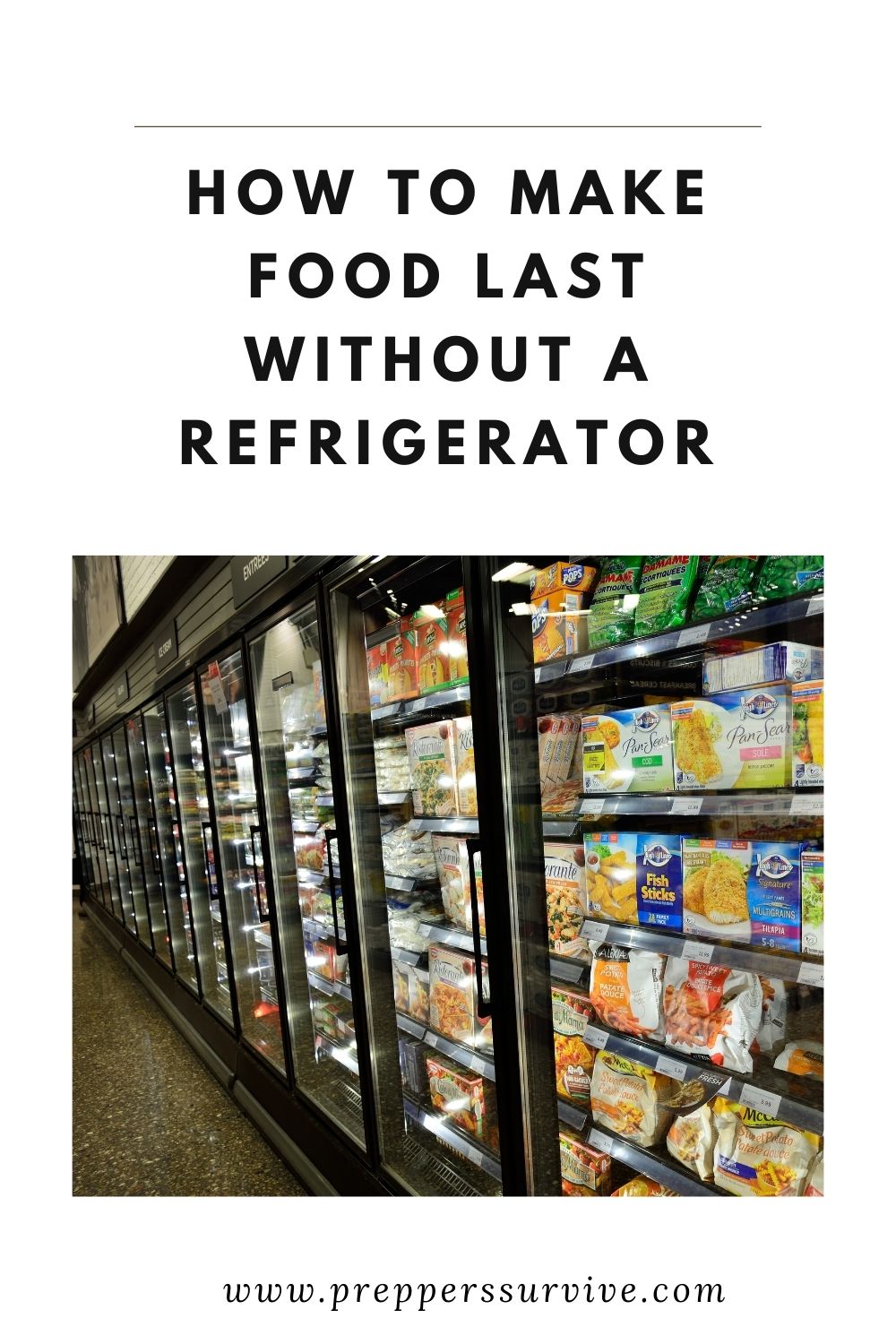
Ice cream. Eggs. Fresh cuts of meat. Can you imagine enjoying any of these foods without the luxury of modern-day refrigeration? Most people don’t give the idea a second thought until the normally reliable hum of their refrigerator suddenly goes radio silent.
From power outages to random breakdowns, there are several things that can cause a refrigerator to suddenly give up the ghost. And unless you’re prepared to transfer the contents of your refrigerator to an insulated cooler, an inoperative refrigerator often means tossing out perfectly good food due to spoilage.
There is no denying the ease and convenience of a refrigerator. But in stressful times, it’s always nice to have backup methods of preserving perishable food. Below, here are a few common methods for making food last without the luxury of a refrigerator.
Method #1: Natural Freezing/Refrigeration
Depending on where you live, you may be able to keep your perishable foods cold through natural freezing and cooling methods. For instance, if you live in a colder climate, you could easily use the great outdoors as your freezer throughout winter. The main risk of storing food outside is keeping it safe from wildlife. Animals can smell your food, so make sure that your food is out of reach or secured in a protective case.
Another option is to harvest ice during the winter. This is a common practice among the Amish people who typically use ice boxes to preserve their food. If you don’t want to build a huge icebox in your backyard, you could simply use a cooler with extreme ice retention to store food in the winter.
If you live in a dry, hot climate, you could also try using something called a zeer pot. Frequently used in African countries, zeer pots are porous clay pots containing wet sand that rely on simple evaporation principles to keep food fresh. While zeer pots work great for fruits and veggies, using them for dairy and meat may be risky, depending on your location.
Method #2: Drying
Drying foods, or dehydrating foods, is another common method of food preservation that has been used for tens of thousands of years. Ancient peoples in the Middle East would often dehydrate their food by allowing it to dry in the hot sun.
Today, most people speed up the drying process by using a food dehydrator. Dehydrating food is especially popular among backpackers and hikers who need a quick and nutritious meal while on the trail. And because dehydrated foods are light and nutritious, they can be easily stored in a car emergency kit and make excellent road trip snacks.
Dehydrating your food is a fun activity to do on the weekend. It’s also a great way to stock your pantry in case of an emergency, such as a power outage.
Method #3: Fermentation
Fermentation is another ancient method of food preservation that has been around for millennia. In fact, you may already eat and drink fermented products without realizing it. Wine, beer, bread, yogurt and many kinds of cheese are fermented.
Fermentation is a process through which microorganisms, such as yeast and bacteria, break down starches and sugars in food and convert them into alcohol or acids. These alcohols or acids give fermented foods their distinct sour flavor while acting as a natural preservative.
While the smell is usually less than pleasant, it’s well worth the stench. Fermented foods can last up to three months and are packed with health benefits that do a mind and body good.
You don’t need to store fermented food in the refrigerator. However, keep in mind that the food will continue to ferment if it’s not stored in a cool place, which might make it too sour for your liking.
Method #4: Canning
Traditional canning involves placing food in jars or cans and heating them to a specific temperature to destroy microorganisms. This heating and cooling process forms an airtight seal that prevents other microorganisms from re-contaminating the canned food.
In modern times, many people use the pressure canning method, which is thought to be much safer than a boiling water bath. The biggest downside to pressure canning is that it requires more equipment.
No matter which canning method you use, it’s highly recommended that you do your research on canning. While canning is a great way to store your own food for up to a year, it can be a somewhat complicated process.
Method #5: Salt Preservation
Salt is far more than just a seasoning. In addition to giving food flavor, it’s also a time-honored method of preserving foods. In colonial times, people would often salt their meat to preserve it through winter and transport it on ships.
Salting food is basically a form of food dehydration. It works by drawing water out of the food, which microorganisms need in order to grow and thrive. Salt also kills the microbes by making their environment too acidic.
Curing is a common form of salt preservation that is often used to preserve meats and fish. Since many people enjoy the unique taste of cured meats, you’ll find plenty of guides on how to cure meat at home.
The Takeaway
As you can see, there are several ways to make food last without a refrigerator. Whether you want to be better prepared for emergencies or pick up a new hobby, these food preservation methods are all great ways to boost the flavor of your foods while increasing your self-reliance.
Just remember that these methods can be dangerous when done incorrectly. Always do your research and observe safe food handling practices.
Thanks for visiting Preppers Survive. Before you leave subscribe to our newsletter. If you enjoyed this article, please share it on your favorite social media.



Thanks Nettie. That was very interesting.